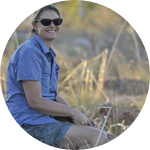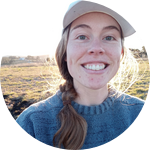About This Project
‘Waxcap’ fungi of the tribe Hygrocybeae are a good indicator of environmental health due to their specific habitat requirements. In the Sydney Basin, nine species in the tribe Hygrocybeae have been listed as endangered due to habitat loss and a lack of knowledge about their ecology. This project aims to build a better picture of the specific habitat requirements of threatened waxcaps and create a database of DNA sequences that will be used to conserve the species.
Ask the Scientists
Join The DiscussionWhat is the context of this research?
Hygrocybeae is a tribe of fungi broadly referred to as ‘waxcaps’, small and brightly-coloured mushrooms that typically favour wet forest habitats. There is some speculation that they form symbiotic relationships with mosses and understorey species, however their food source remains something of a mystery. Rainforest in Lane Cove, Sydney is a hotspot for diversity in the Hygrocybeae including nine threatened endemic species. The distribution of these nine species is predicted based on soil characteristics, but this may overestimate their range. Preliminary DNA analysis from seven locations in NSW, including Lane Cove indicates that there is a greater level of endemism in Hygrocybeae species of eastern Australia than is currently described.
What is the significance of this project?
The Hygrocybeae of Lane Cove are one of only two fungi groups protected under environmental legislation in NSW. A lack of understanding of habitat requirements, ecological processes and associations between fungi, their habitat and other species have been identified as major threats to their continued existence.
This project will add to what is known about the habitat requirements of threatened waxcap fungi through systematic survey of potential habitat. The funding will allow for a doubling of the previous survey effort to a total of 14 sites. It will also generate DNA sequence data which will be used to place threatened fungi within the recently revised Hygrocybeae phylogeny and potentially lead to the naming of new species in the Australian Hygrocybeae.
What are the goals of the project?
The aim is to survey 7 new potential sites in the autumn-winter period 2023. I will be collecting fungi specimens (with all relevant permits), and data on variables such as vegetation, soil type, light levels, aspect and landscape position. Macro and micro-scopic characters of each specimen will be recorded in the field and the lab. A sub-set of these specimens will be sampled for DNA extraction and sequencing. DNA sequences will be used to build evolutionary trees, and these will be compared with physical characters to build support for new species. The goal is to place the threatened species within an updated phylogeny and possibly identify new species from our samples in the process.
Budget
GIS analysis of habitat features of known locations of threatened waxcap fungi indicates that potential habitat is located throughout the Sydney basin. The budget will allow field survey in 7 new locations throughout predicted habitat. Search locations have been selected close to known threatened species habitat, as well as sites on the furthest geographic boundaries of predicted habitat. The budget will also allow for the extraction and sequencing of DNA barcode sequences from collected specimens from new sites.
Endorsed by
 Project Timeline
Project Timeline
Sampling will take place over the autumn and winter fruiting period, followed by DNA extraction, sequencing and phylogenetic analysis. Field data collected will be used to build a predictive habitat model for the threatened waxcap fungi.
Mar 01, 2023
Project Launched
Aug 31, 2023
Field sampling within predicted range
Sep 30, 2023
DNA extraction and sequencing
Oct 31, 2023
Construction of phylogenetic trees (and identification of new species)
Jan 31, 2024
First habitat model complete
Meet the Team
Affiliates
Isobel Colson
I'm interested in the relationships between fungi and their environment.
I studied a Masters of Plant and Fungal Taxonomy, Diversity and Conservation at Kew Gardens and had the opportunity to assist the mycology team to process macrofungi samples from a collection from Colombia.
Since then, I've been working as a consultant based in Orange and have carried out biodiversity surveys and impact assessment. It has highlighted to me that research is needed to provide accurate habitat information for many species, particularly native fungi.
I have recently started a PhD program with the Hawkesbury Institute of the Environment. My research is focused on threatened waxcap fungi.
Additional Information
All new species descriptions will be published, and sequences will be placed in a public-access database. Surveys will be undertaken with all relevant permits and protocols for access and specimen collection.
The photo provided is of a red Hygrocybe species at Lane Cove. Photo credit: Meagan Hinds, NSW DPE.
Project Backers
- 16Backers
- 103%Funded
- $4,850Total Donations
- $303.13Average Donation


